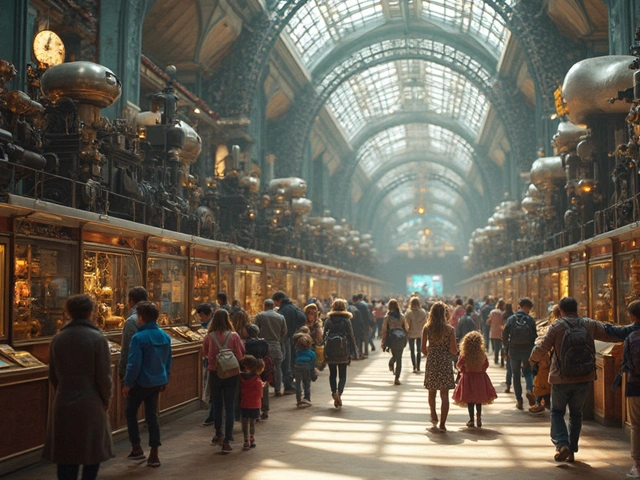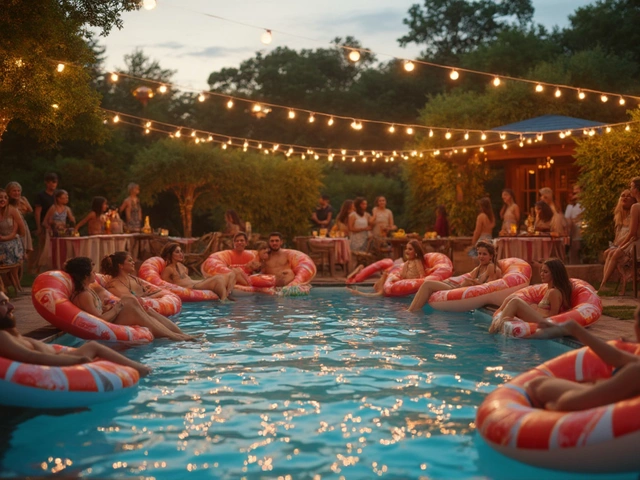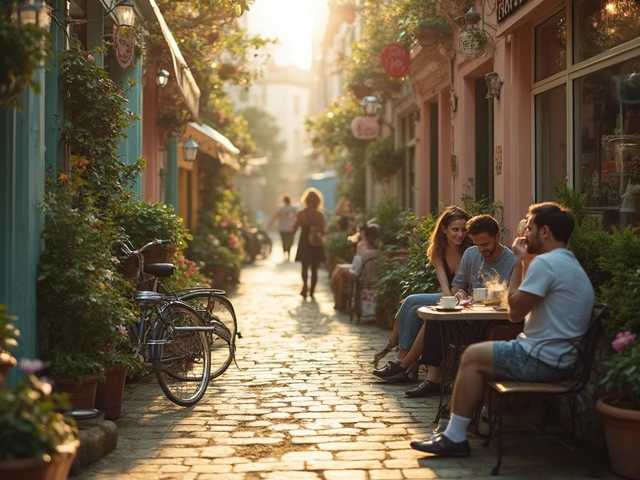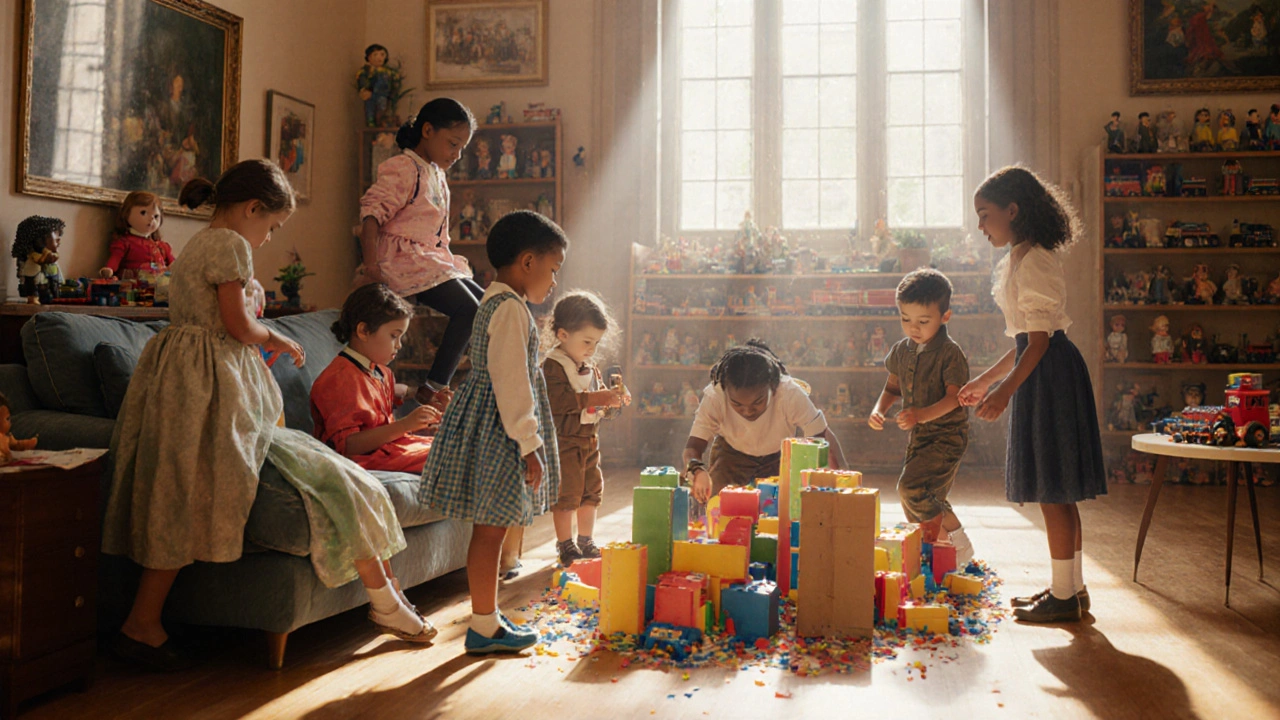
In London, finding activities that both kids and adults can enjoy isn’t always easy-especially when you want something more meaningful than a playground or a cinema. But the city’s art scene has quietly become one of the best places for families to explore creativity together. Forget the idea that galleries are quiet, stuffy spaces only for adults. London’s top child-friendly art galleries are designed for curiosity, mess, movement, and wonder. From interactive installations to hands-on workshops, these spaces welcome crayon drawings, loud questions, and endless "Why?" moments.
Victoria and Albert Museum of Childhood: Where Play Meets Art
At the Victoria and Albert Museum of Childhood in Bethnal Green, the art isn’t just on the walls-it’s in the toys, the puppets, the model railways, and the vintage dolls’ houses. This branch of the V&A isn’t just a museum; it’s a giant playroom with cultural depth. Kids can climb into a 1950s-style living room, dress up in historical costumes, or build their own cardboard city in the Make & Play zone. The museum’s collection spans 300 years of childhood, from Victorian tin soldiers to modern video games. Best of all? Entry is free, and there’s always a rotating exhibition designed for under-12s. The current one, Toy Stories: From Rag Dolls to Robots, lets children trace how play has changed across generations-and even design their own toy using simple digital tools.
Tate Modern: The Family Floor That Feels Like a Playground
Down by the Thames, Tate Modern’s Family Floor is a game-changer for parents dragging tired kids through modern art. Every Saturday and Sunday, the Level 4 space transforms into a creative hub. Kids can paint on giant rolls of paper, sculpt with clay, or build structures with foam blocks inspired by the current exhibitions. The staff don’t just supervise-they ask questions. "What does this color make you feel?" "If this sculpture could talk, what would it say?" There’s no right answer. No pressure. Just space to react. The museum also offers free Family Trails-printed booklets with scavenger hunts tied to the art on display. One recent trail asked kids to find five shapes hidden in a Kandinsky painting, then draw their own version. It turned a 45-minute visit into a two-hour creative session.
Whitechapel Gallery: Art That Talks Back
Don’t let the name fool you-Whitechapel Gallery isn’t just for art lovers with PhDs. It’s one of London’s most welcoming spaces for families, especially those from diverse backgrounds. The gallery runs weekly Art Explorers sessions every Saturday morning for ages 3-8. Each session ties into the current exhibition. During a recent show on climate change, kids used recycled materials to make tiny sculptures of melting glaciers. The gallery also has a dedicated children’s reading nook with picture books about artists like Frida Kahlo and Yinka Shonibare. And because it’s in East London, the café serves affordable, kid-approved meals like jacket potatoes with cheese and homemade hummus wraps. No overpriced sandwiches here.
National Gallery: The Art Detective Game
The National Gallery on Trafalgar Square might seem intimidating with its grand columns and Rembrandts, but their Art Detective trail is a hit with kids aged 6-12. Pick up a free activity pack at the entrance-it includes a magnifying glass, a checklist of hidden details in famous paintings, and a notebook. One challenge: find the dog in Vermeer’s A Young Woman Seated at a Virginal. Another: spot the fruit that doesn’t belong in a 17th-century still life. The trail takes about 90 minutes, and there’s a reward sticker at the end. Parents love it because it turns passive looking into active discovery. And if your child gets restless, the gallery’s south garden has benches, trees, and a quiet corner perfect for a snack break.

Hayward Gallery: Bold, Big, and Built for Touch
On the South Bank, the Hayward Gallery doesn’t shy away from the weird. And that’s exactly why kids love it. Their Family Sundays feature large-scale installations that invite interaction. Last spring, a giant inflatable sculpture called Clouds filled the atrium-kids could crawl through it, bounce on it, and even lie inside while watching the ceiling lights pulse like a heartbeat. The gallery’s art educators don’t explain the meaning upfront. Instead, they ask: "What does this remind you of?" "Would you want to live here?" The answers are always surprising. It’s the kind of place where a five-year-old might say, "It looks like a dragon sleeping," and the educator nods and says, "That’s a great way to see it."
There’s also a free art kit you can borrow: sketchbooks, chalk, and washable markers. You can draw right on the gallery’s outdoor walls (with permission, of course). And the café has a kids’ menu with real food-not just nuggets. Think wholewheat pasta with tomato sauce and grilled chicken strips.
Barbican Art Gallery: Where Art Meets Science
For families who like a bit of tech with their art, the Barbican’s Art & Science program is unbeatable. Kids can use tablets to animate old paintings, build digital murals with motion sensors, or try VR experiences that let them step inside a Monet water lily pond. The gallery’s Little Artists workshop for ages 2-5 is held every Wednesday morning and focuses on sensory exploration-textures, sounds, smells. One session used scented clay and projected light to recreate the feeling of walking through a forest. The Barbican also has a dedicated family lounge with changing tables, high chairs, and a quiet room for meltdowns. It’s rare to find a gallery that plans for the messy, real moments of parenting.
What to Bring (and What to Leave at Home)
Don’t assume you need to pack a picnic or a stroller. Most of these galleries have cafés with decent kid options, and many offer free stroller parking. But here’s what actually helps:
- A small sketchbook and washable crayons (no markers-they stain)
- Snacks in a sealed container (no crunchy chips-they’re loud)
- Water in a reusable bottle (all galleries have refill stations)
- A change of clothes (especially if you’re going to Whitechapel or Hayward)
- Patience-and a sense of humor
Leave the stroller at home if your child can walk. Many galleries have narrow corridors and steps. And skip the selfie sticks. They’re banned everywhere.
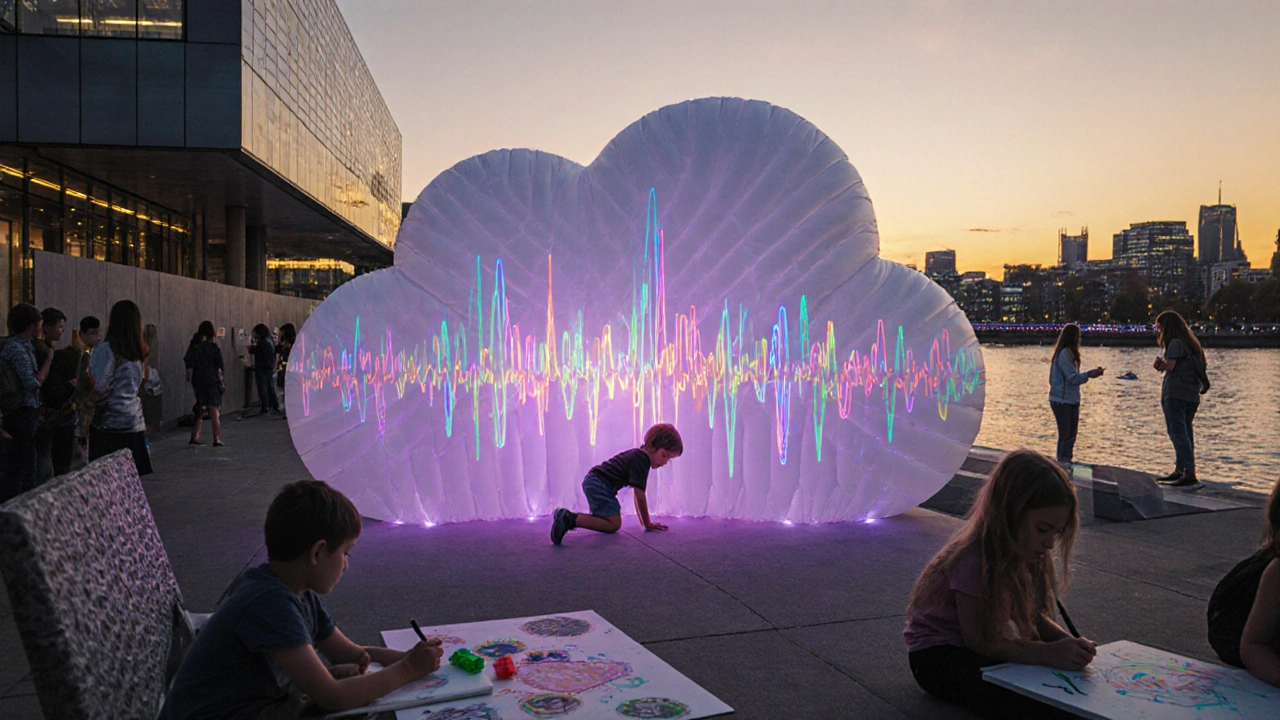
When to Go: Avoiding the Crowds
Weekends are busy, especially in school holidays. For a calmer experience, go on weekdays. Most galleries are open until 6pm, and the last two hours are usually quieter. Tuesday and Wednesday mornings are the sweet spot-fewer tourists, more staff available to help kids. The National Gallery and Tate Modern also offer free late-night openings on Fridays, but those are better for teens. For under-10s, stick to daytime.
Free or Low-Cost? Yes, and Here’s How
Every gallery listed here is free to enter. Always. That’s a London thing. You might pay for special exhibitions (like a Van Gogh show), but the permanent collections? Always free. Some galleries offer £2-£5 workshops for kids, but the drop-in activities are free. You can also get a London Pass if you’re planning multiple visits, but it’s rarely worth it for families unless you’re hitting 4+ paid attractions. Stick to free entry and save your budget for ice cream after.
Why This Matters in London
London is a city of 8 million people, but it’s also a city where art isn’t locked away in ivory towers. It’s in the streets, the parks, the tube stations, and yes-the galleries. These spaces don’t just teach kids about Picasso or Hockney. They teach them that creativity isn’t reserved for experts. That asking questions is part of the process. That art can be loud, messy, and joyful. And in a city that moves fast, that’s a rare gift.
Are London art galleries really child-friendly, or is it just marketing?
They’re genuinely designed for kids. Unlike galleries in other cities that just add a kids’ corner as an afterthought, London’s top galleries build their programs around children’s needs. Staff are trained to engage young visitors, spaces have tactile exhibits, and activities are created with input from educators and child psychologists. The Victoria and Albert Museum of Childhood even has a dedicated play area with padded floors and sensory walls.
Can toddlers enjoy art galleries?
Absolutely. Galleries like the Barbican and Whitechapel run specific sessions for ages 2-5. These aren’t quiet tours-they’re sensory experiences. Think touching textured fabrics, listening to sounds from paintings, or smelling scents linked to art themes. The key is short visits-30 to 45 minutes max-and letting kids lead the way. If they want to touch a sculpture? Let them. Most galleries have replicas or approved items for that.
What if my child gets overwhelmed or has a meltdown?
Every major gallery has a quiet room or family lounge. The Barbican and Hayward Gallery even have nursing rooms with changing tables. Staff are used to it. Don’t feel guilty. Just ask at the front desk for the nearest quiet space. Many galleries also let you step outside for a few minutes and re-enter with the same ticket. It’s built into the design, not a flaw.
Are there any art galleries in London that are bad for kids?
Some smaller, private galleries or those focused on contemporary conceptual art may not be suitable. Places like the Saatchi Gallery or the Serpentine’s more experimental shows can be confusing or even unsettling for young kids. Stick to the big names listed here-they’ve been vetted by families for years. If you’re unsure, check the gallery’s website for a "Family-Friendly" tag or call ahead.
Do I need to book ahead for family activities?
For drop-in activities like Tate Modern’s Family Floor or the V&A’s Make & Play zone, no booking is needed. But for workshops or guided trails (like Whitechapel’s Art Explorers), you’ll need to reserve a spot online. These fill up fast, especially on weekends. Book at least a week ahead during school holidays. Most galleries have a "Family Events" calendar on their website.
Next Steps: Make It a Habit
Don’t treat these visits as one-off outings. Pick one gallery per month. Rotate them. Let your child choose the next one. Bring the same sketchbook every time. Over time, they’ll start noticing patterns-how colors change across centuries, how animals appear in art from different cultures, how the same theme shows up in a Renaissance painting and a street mural. That’s not just art education. That’s how kids learn to see the world differently. And in London, where culture is always changing, that’s the best gift you can give them.

